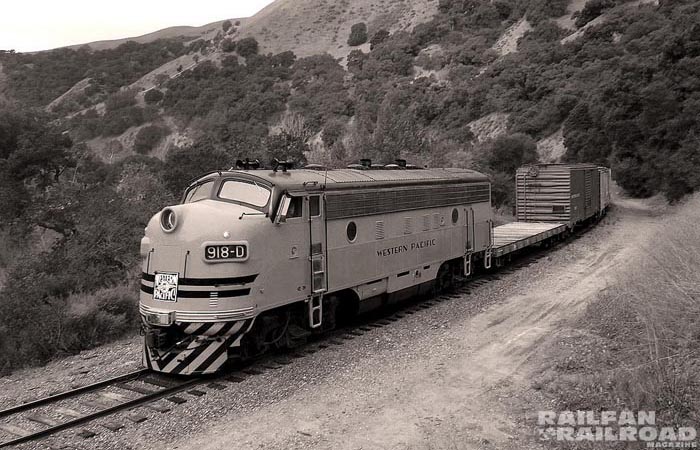By Otto M. Vondrak/Photos by the author
Photography is a powerful medium. I was born too late to witness the operations of the Western Pacific first hand, but for years I had admired the dramatic photos from along this line from scores of talented photographers. Something about these diesels decorated in bright orange appealed to me, and I’ve always been a fan. Growing up in in New York, I never thought I’d have a chance to visit California, let alone see any evidence of the WP. When finally made my first visit to the Golden State and drove through the hallowed grounds of Altamont Pass, I kept scanning the tracks, half expecting the California Zephyr to make its way through the winding valley at any moment.
Some folks don’t care for photo charters, and they care for museums and tourist lines even less. Ask any of them, and they’ll probably tell you that they can’t get interested because it is “fake.” And for many museums, that is a hard claim to refute, since many vintage collections are a mix of odd-ball and un-matched equipment that normally wouldn’t operate together.
Following this 2012’s successful Winterail gathering in Stockton, Calif., Steve Barry got us tickets for a photo charter run on the Niles Canyon Railway. We were both excited to learn that the star of the show would be Western Pacific 918-D, an EMD F7 acquired by the Pacific Locomotive Association in 1981 and restored to operation in 2002. It’s a beautiful engine, and I was looking forward to seeing her in action on this trip.
The skies alternated bewteen sunny and overcast as the trip began. We made our first stop near the end of the line, and I picked a quiet spot around the corner from where everyone else was set up. I heard 918’s distinctive horn as the unit began to throttle up. The sun emerged and warmed the scene. That distinctive orange nose emerged from around the bend, and chills went up my spine! For one brief moment, I was standing along the WP main line and photographing a real WP freight in glorious California sunshine! I carefully composed my shot and conservatively fired off 20 or 30 frames. I returned to the train grinning ear to ear.
The scene was staged, but the emotions were real. Even if it was only a “similuation,” I got to experience the glory of the Western Pacific, though it was only a brief encounter. Now, I don’t think anyone would believe for a minute that my photo was shot in 1962 and not 2012, nor would that be my intention. If anything, I hope my photo captures the spirit of the Western Pacific, as seen through the long lens of time. I had read about experiences like these for years, but it wasn’t until I stood trackside along the Niles Canyon Railway that I was able to complete the circle. My connection to those published images became that much stronger for it. I now know what it means to see and hear a WP diesel grind through the sunny hills of northern California.

When we returned to the restored depot at Sunol, I grabbed a photo of the crew tending to Quincy Railroad No. 2, a 2-6-2T built by Alco in 1924. The engine was quietly simmering away as the crew tended to its needs. It looked like a classic set-up to me, so I quickly framed and fired the shutter. “Why would you bother taking pictures of tourist railroad workers?” someone asked me. That’s an odd question, I thought. They appear to be railroaders to me. That’s real steam coming out of the engine. They will get dirty with real grease and soot as they make real repairs. And I imagine when they finally get home, they will be really tired. Because they are volunteers on a heritage railroad, does that make their job any less “real” or important?
We have reached, if not passed, a certain threshold where the machines we have preserved have outlived those who experienced them first-hand. This is a challenge the preservation world is facing as we continue into the 21st century. Recreations and “simulations” should not be looked down upon as cheap imitations. Instead, we should look to experiences at museums and heritage railroads as a tangible connection to the past, offering the visitor a chance not only to see railroads in action, but to experince them as well.


